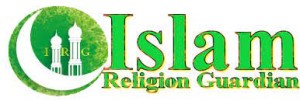This small room in the far left corner of the Masjid-Qibly, known as Masjid Umar, in honor of Caliph Umar (may Allah be pleased with him), who visited Jerusalem in 638 CE.
At the time of Umar (may Allah be pleased with him), the Muslim armies liberated most of ash-sham, which today includes Syria, Jordan, Lebanon and Palestine. They reached the gates of Jerusalem and were ready to seize the city.

Christian residents barricaded themselves and demanded that they surrender only if the Caliph, who was in Medina, came and took the keys to the city. Although the Muslim army was powerful enough to seize the city by force, they wanted to minimize losses and agreed with the request of the Christians.
Accordingly, Umar (may Allah be pleased with him) went from Medina to Jerusalem, where Sophronius, the Christian patriarch of Jerusalem, offered him “keys” to the city. Umar (may Allah be pleased with him) entered the city of Jerusalem on foot without bloodshed or persecution of the inhabitants.
Once in the city, he asked Sophronius to take him to the sanctuary of Al-Aqsa. When they reached there, Umar (may Allah be pleased with him) was shocked to find that it was covered with garbage, since the Romans used the area as garbage. Umar (may Allah be pleased with him) immediately knelt down and began to clear the territory with his own hands. When the comrades saw this, they followed their example, and soon the whole territory was cleared.

It is believed that the small room shown above was the area where Umar (may Allah be pleased with him) began to clearing the garbage. It was in his honor that this small room was built by previous Muslim rulers and was called Masjid Umar. It is considered part of the Masjid al-Qibly.
Today, part of the mosque is used as an emergency clinic.
Sources: HUMA’s travel guide to Palestine, Sheikh Sulaiman Ghani



![[PHOTOS] Hijrah 1447: Sacred Ceremony of Kaabah’s New Cover Unfolds in Mecca [PHOTOS] Hijrah 1447 - Sacred Ceremony of Kaabah’s New Cover Unfolds in Mecca](https://islamreligionguardian.com/storage/2025/06/PHOTOS-Hijrah-1447-Sacred-Ceremony-of-Kaabahs-New-Cover-Unfolds-in-Mecca-2-218x150.jpg)

